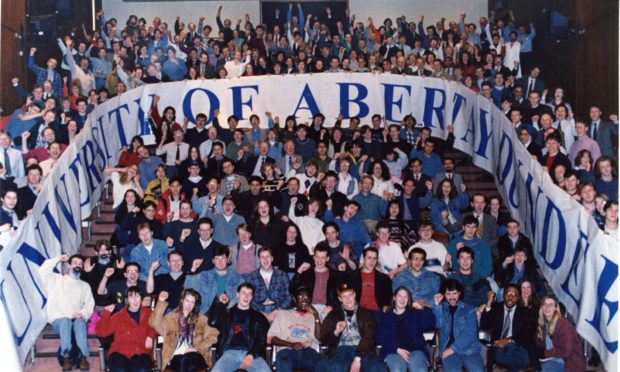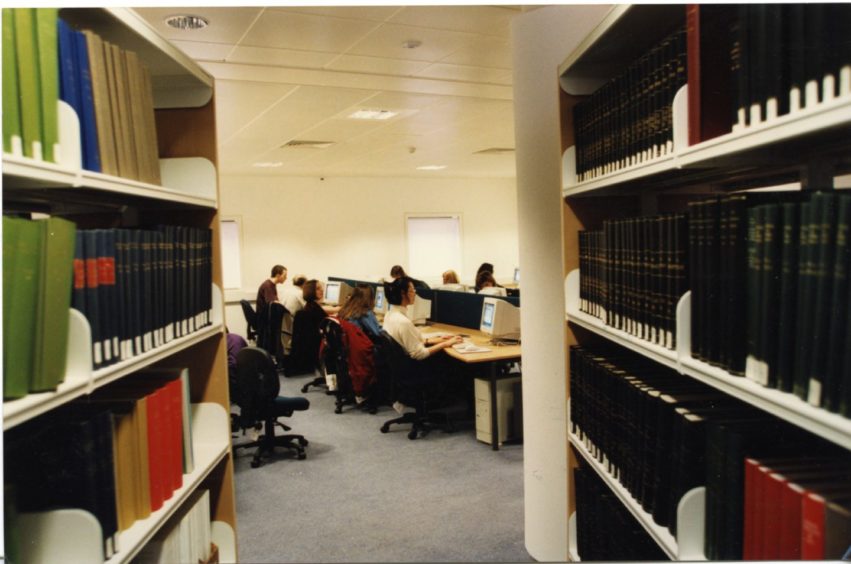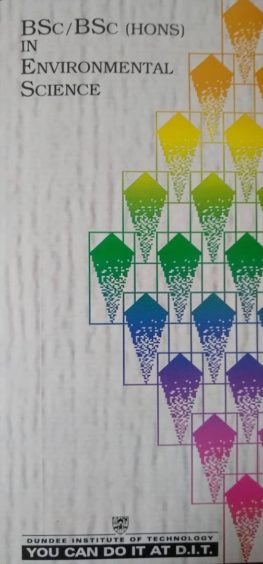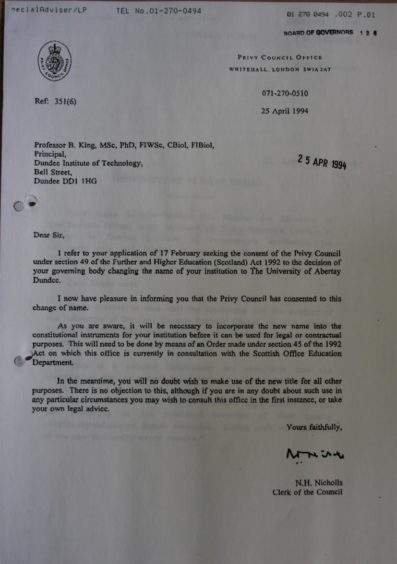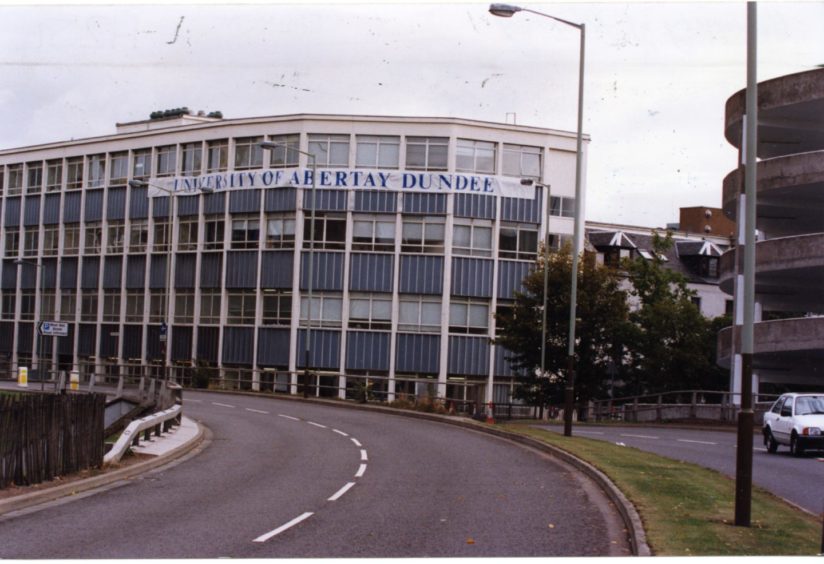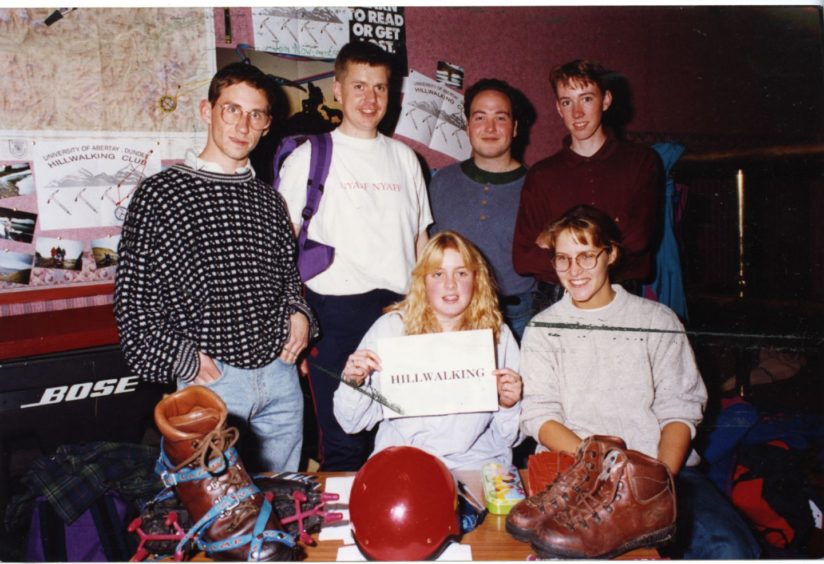A search has been launched to track down students who answered the call to arms and became key figures in the creation of Abertay University.
They participated in a “quite radical” advertising campaign which is widely considered crucial in getting the student roll up to the 4,000 required to gain university status in 1994.
Over the years it adapted its courses for the times and became more international in its outlook, but retained a focus on preparing students for the world of work.
UK Government
The push for university status began in 1991, when UK Government policy to increase the number of students in higher education created opportunities for tertiary education institutions to become universities.
However, an initial attempt to become a university in 1992 failed on the grounds that the college – which was by that time called Dundee Institute of Technology (DIT) – was too small.
DIT was told it would have to increase its enrolment dramatically from its roll of around 2,500 if it were ever to become a university.
An ambitious marketing campaign known as “You Can Do It at DIT” was launched aimed at doing just that.
Students were integral to the campaign and grabbed the bull by the horns.
Abertay archivist Ruaraidh Wishart said: “This campaign was actually quite radical.
“Other higher education institutes relied on their academic reputation and tradition to attract students.
“What was being suggested here was that the institute needed to ‘sell’ its actual courses – quite a unique approach at the time.
“Extensive market research was carried out that concluded the college had an excellent academic reputation in Tayside and Fife, but the use of the word ‘technology’ in its name gave many the impression that it was boring.
“The research recommended that Dundee Institute of Technology alter its name to something more attractive for young students – DIT.
“This was also reminiscent of MIT, the famous American institute.”
Slogan
This led to the birth of the slogan: “You Can Do It at DIT”.
It was printed on prospectuses, course leaflets and promotional videos.
The campaign also included a snappy TV commercial which gave the institution a new image as a vibrant, modern and enjoyable place to get the qualifications needed for life.
Ruaraidh added: “Students were integral to the campaign – who better to sell the DIT experience than those who were already here?
“They featured prominently on billboards and a radio show was produced by the students about life on campus. Sections of that were broadcast on the local radio station, Radio Tay.
“There was also an innovative TV commercial that told the public in 30 seconds what these students were ‘doing at DIT’.
“Each student would state their degree course, before telling the public what their hobby was – for example, DJ-ing or basketball.
“The message was clear – prospective students could do a wide variety of industry relevant degree courses, and at the same time could enjoy themselves when they weren’t studying.”
Success
The campaign was a resounding success and by January of 1994 it was clear that the 4,000 student quota would be met.
Ruaraidh said: “This campaign really was influential, and we’re looking to track down the former students who were part of it.
“We want to hear their stories, find out their memories of DIT and find out what they are doing now.
“They may not have realised it at the time, but they would become key figures in Abertay’s history.”
A public consultation was then launched to decide what the new university should be called and more than 200 names were suggested which included the University of Invertay, the University of Tayside and Dundee University of Technology.
There was also the suggestion to retain the name Dundee Institute of Technology, aligning the university with MIT in the USA.
In the end they decided on the University of Abertay to express the links it already had with both Fife and Tayside.
Significant contributions
During its 26-year history, Abertay University has developed and grown, launching the world’s first degrees in both video games and ethical hacking while producing graduates who have made significant contributions to society.
They can also contact archives@abertay.ac.uk to discuss other ways of sharing their experiences.
The search is being carried out as part of the Memories Reanimated project which has been launched to preserve memories of Abertay University, and any of its previous guises, for future generations.
A newly designed portal is giving members of the public the chance to submit video or audio recordings of their stories about the establishment, and anything else they might have relating to it such as images or memorabilia.
These will become part of a project to expand historical knowledge about Abertay and The Tech, as it used to be known, through the voices of the people who were part of it, and provide the community it has served with an opportunity to add to its archives.
